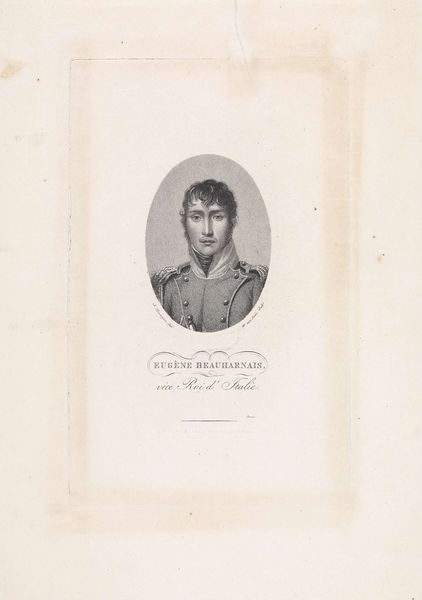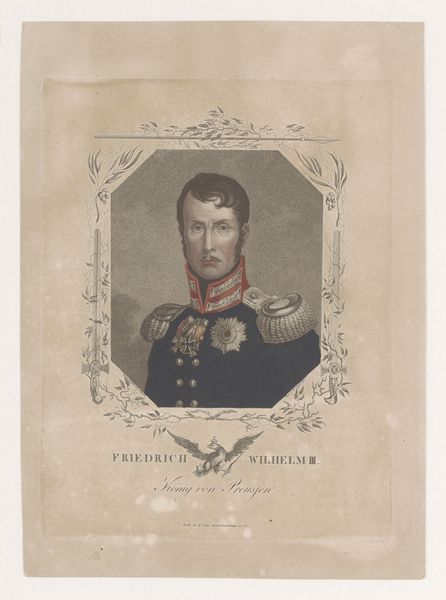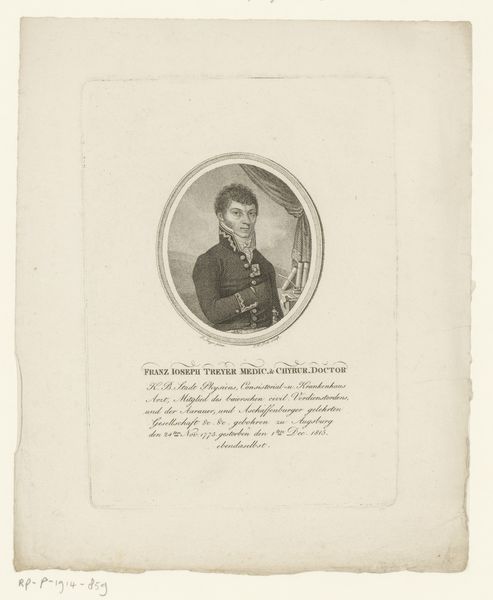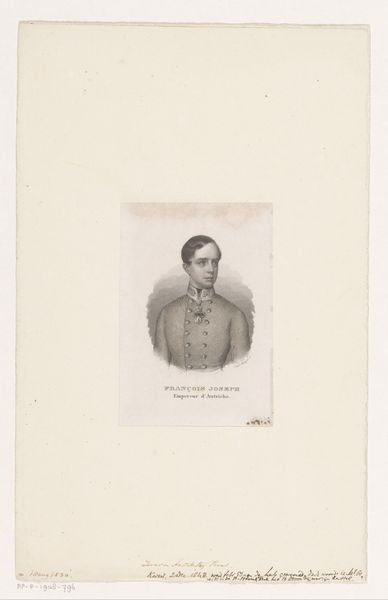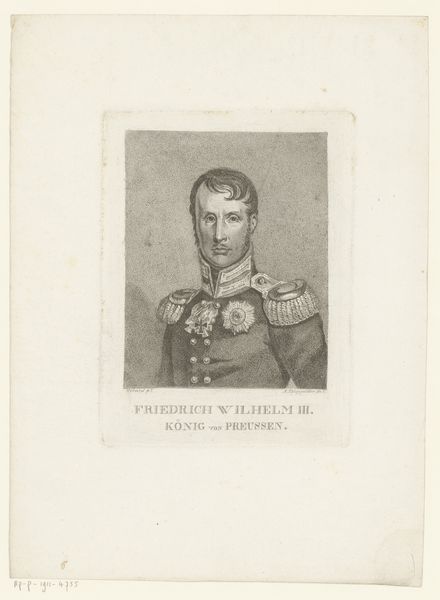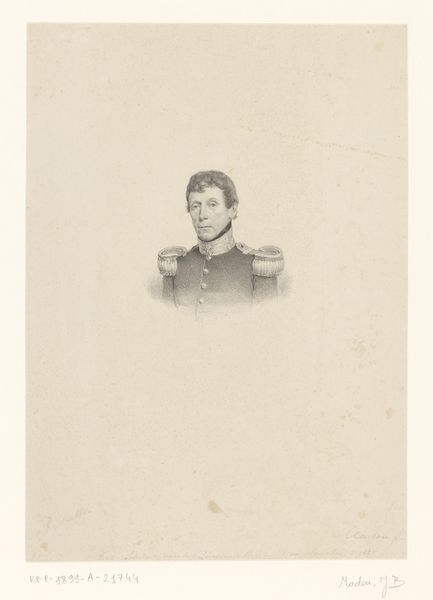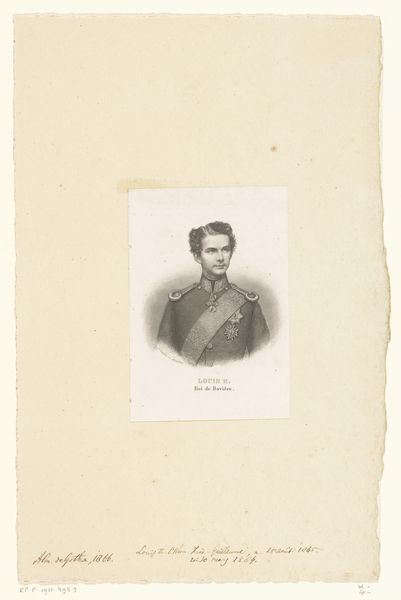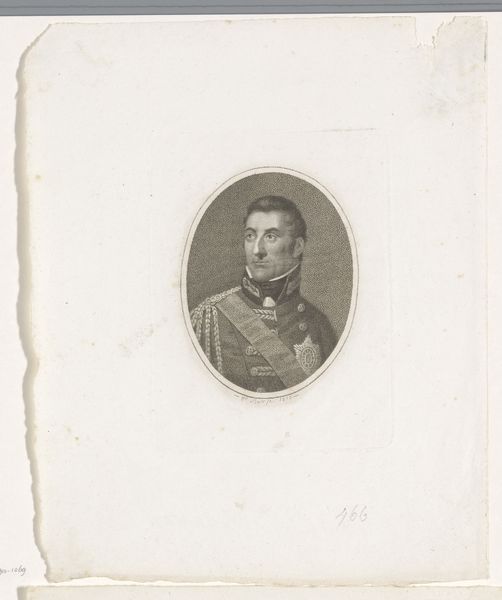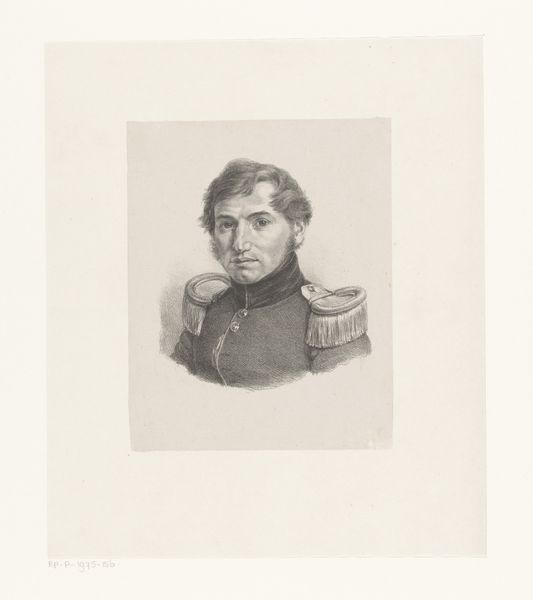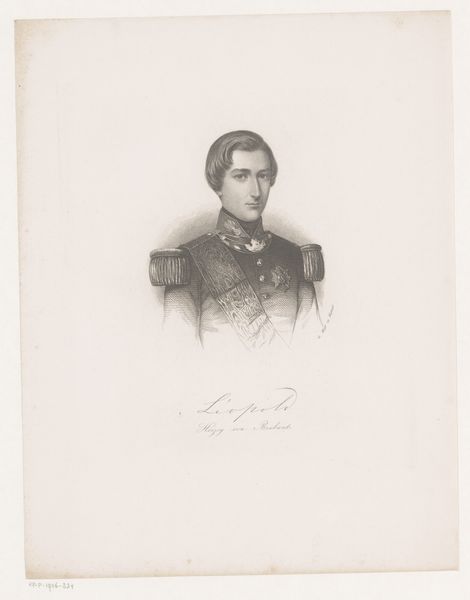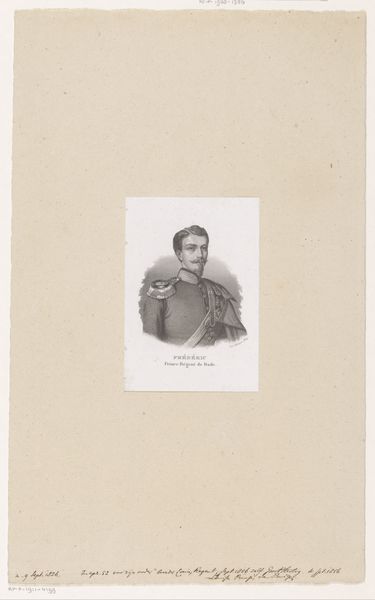
engraving
#
portrait
#
neoclacissism
#
old engraving style
#
portrait reference
#
19th century
#
history-painting
#
engraving
Dimensions: height 148 mm, width 91 mm
Copyright: Rijks Museum: Open Domain
Curator: This somber engraving, "Portret van Eugène de Beauharnais", dates from somewhere between 1800 and 1850, credited to C.F. Noël. It's done in that crisp Neoclassical style, and goodness, it feels heavy. Editor: Heavy is the word. The somber gaze, the severe frame around the portrait... it’s giving me the weight of Empire, quite literally, you know? But something in the cross-hatching also offers a quiet tension. Curator: Precisely! Look at how those fine lines give depth to his face, yet the eyes remain almost flat, enigmatic. There's something profoundly unknowable about him, despite the detail. Editor: It’s this control, right? Neoclassicism always strikes me as a movement that sought to impose order – almost violently at times – on a world undergoing immense upheaval. Beauharnais, Napoleon’s stepson and a figure of power, becomes a symbol *of* order, not a person within it. Curator: True! But think about the technical skill needed for engraving... each line, each value, meticulously placed. Perhaps the artist sought to capture some internal truth *through* the rigor. Is there a trace of the sitter’s psychology within all the formality? I wonder... Editor: Perhaps… I’m always wary of ascribing too much ‘interiority’ to figures presented in this way. Power often demands a performance of self, a curated image for public consumption, no? Curator: Absolutely. The military uniform alone speaks volumes about that curated image. I mean, we see hints of his personality, perhaps even vulnerability, fighting against that rigid exterior. It really highlights that very human friction between who we are, and who we need to be. Editor: It’s a poignant contrast – the softness implied by his curling hair and gentle face juxtaposed with the strict lines of his coat and title. And the framing! A monument to a man. Curator: Exactly. So, on one hand, we have Neoclassical stoicism and power, and on the other hand we see the eternal struggle of the human soul and societal expectation captured with extraordinary artistry. It seems this work holds so much in balance. Editor: Ultimately, art like this pushes us to reflect on not just history, but how these displays of power resonate today in our own world.
Comments
No comments
Be the first to comment and join the conversation on the ultimate creative platform.
